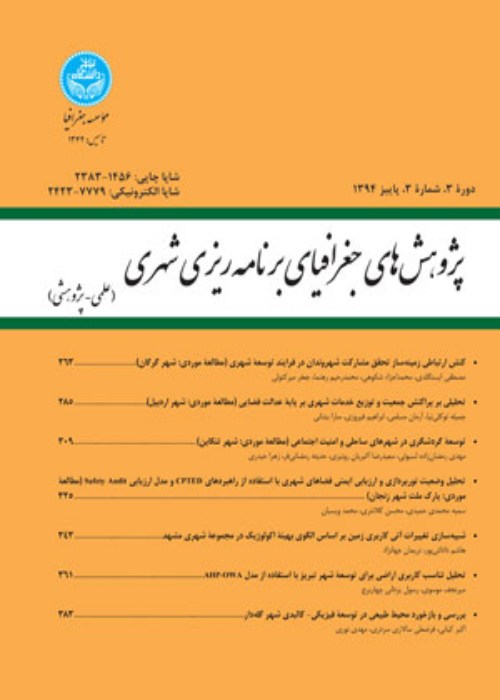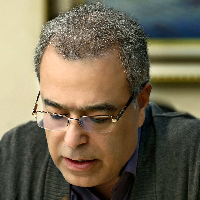Conflict of Interests Affecting Factors in the Process of Regenerating the Historical Context the Case Study of Nafar Abad Neighborhood, Tehran
The regeneration of historical textures to adapt these textures to the modern needs of urbanization and to preserve their identity is an important matter, and due to the multi-stakeholder nature of the reconstruction processes and the involvement of different interests of the stakeholders in the processes, conflict of interests is inevitable. The current research aims to identify the factors affecting the occurrence of conflicts of interest and the effects of conflicts in the regeneration process of historical textures. The current research is qualitative. The statistical population of the research includes the beneficiaries of the regeneration of the Nafar Abad neighborhood, who were identified in the form of 18 groups by studying the available documents. Using the snowball sampling method, which went until theoretical saturation, 31 people were selected as the representatives of the interested groups. The data needed for the research was collected through semi-structured interviews. Data analysis was also done through thematic analysis and using MAXQDA. The research findings show that several factors in managerial, economic, legal, executive, and social dimensions cause conflicts of interest in reconstructing historical textures, including the factors of urban management, the number of key stakeholders, and urban rules and regulations. The conflict of interests acts as a mutual influence and impression with the regeneration process so that the conflict of interests appears under the influence of the defined regeneration process. After it occurs, the conflicts begin to affect the regeneration process.
Historical textures and related issues are some of the most important issues and challenges of urban planning. Urban regeneration is one of the most critical recent approaches in worn-out and historical textures; due to the nature, extent, and comprehensiveness of this approach in covering various economic, social, physical, environmental, and cultural dimensions, much complexity appears in regeneration projects. One of the main reasons for the complexity and uncertainty of urban regeneration projects is that there are different stakeholders in these projects, which increases the possibility of conflicts of interest in the regeneration process. In this way, it is important to identify the factors influencing the occurrence of conflict of interest in the process of regeneration of historical textures, despite the existence of wide and valuable areas of historical textures in the country, as well as their need for regeneration to match the modern and contemporary needs of citizens' lives. The purpose of this article is to identify the factors affecting the occurrence of conflict of interests in the process of regeneration of historical textures as a fundamental challenge in the path of realization and efficiency of programs of regeneration of historical textures and also to identify the effects of conflict of interests in the process of regeneration historical textures which was done using qualitative research method and case study approach. The Nafarabad neighborhood of Rey City was selected as a case study from the historical and old neighborhoods of Rey City.
The current research is applied and based on a qualitative methodological approach. The research strategy is also an Abductive strategy, and the case study approach was used to complete the research. In the current research, the key stakeholders of the regeneration process were identified using available documents, and then snowball sampling was used to collect data. In this way, 18 key stakeholder groups, including urban management organizations and institutions at the policy, decision-making, and executive levels, and the local community, including owners, residents, businesses, investors, and pilgrims, were identified as key stakeholders. The data required for the research was also collected through semi-structured interviews with the key stakeholders of the regeneration process of the Nafarabad neighborhood; in total, 31 interviews were conducted, and the data analysis was done through the thematic analysis method.
Based on the research findings, the key stakeholders of the regeneration process were identified in 18 groups and divided into two categories as internal and external stakeholders based on Freeman's classification and primary and secondary stakeholders according to Clarkson's classification. Conflict of interest occurs under the influence of several factors. According to the findings and results of qualitative data analysis based on thematic analysis, 21 main concepts were extracted as factors influencing the occurrence of conflict of interest. Then, according to the frequency of the obtained codes, factors such as urban management, the number of key stakeholders, and city rules and regulations were identified as the most important factors in conflicts of interest. In order to get an overview of the dimensions affecting the occurrence of conflict of interest and a better understanding of the nature of the factors affecting the occurrence of conflict of interest, the obtained factors were categorized according to their nature. In this way, the factors affecting the occurrence of conflict of interest are mainly managerial, executive, legal, economic, and social, which cause conflict of interest. In this way, the management and social dimensions, considering they include more factors than other dimensions, play a greater role in the conflict of interest in regenerating historical textures. The occurrence of conflict of interest during the regeneration process has effects on the regeneration process, which include the slowness and stagnation of the regeneration process, the degradation of social capital, the imposition of costs on the beneficiaries, the deviation and change in the goals of the plan and the reduction or non-realization of the plans, which these effects cause the regeneration process is not completed optimally.
The analysis of the present research shows that the conflict of interest occurs due to several factors in the regeneration of historical textures. Factors affecting the emergence of conflict of interest act in such a way that stimulating interests influencing them and changing the extent of obtaining benefits by different stakeholders causes the emergence of conflict of interest. Based on the five categories of factors, management factors have taken the largest share in the interviews regarding conflict of interest, which seems logical. Because urban management can control other conflicting factors, and by controlling other factors, conflict of interest can be brought to the lowest level. Therefore, perhaps the most important features of good urban management in the current era can be considered the optimal management of the interests of the urban stakeholders and agreement-making and interactive management. According to previous research results, the relationship between the conflict of interests and the process of urban regeneration needs to be examined. Based on the findings of the research, it can be said that the occurrence of a conflict of interest has a reciprocal influence on the process of regeneration in such a way that the conflict of interest affected by the defined process of regeneration by the planners may appear. Also, the conflict of interest will affect the process of regeneration and will cause slowness or changes in this process.
- حق عضویت دریافتی صرف حمایت از نشریات عضو و نگهداری، تکمیل و توسعه مگیران میشود.
- پرداخت حق اشتراک و دانلود مقالات اجازه بازنشر آن در سایر رسانههای چاپی و دیجیتال را به کاربر نمیدهد.




